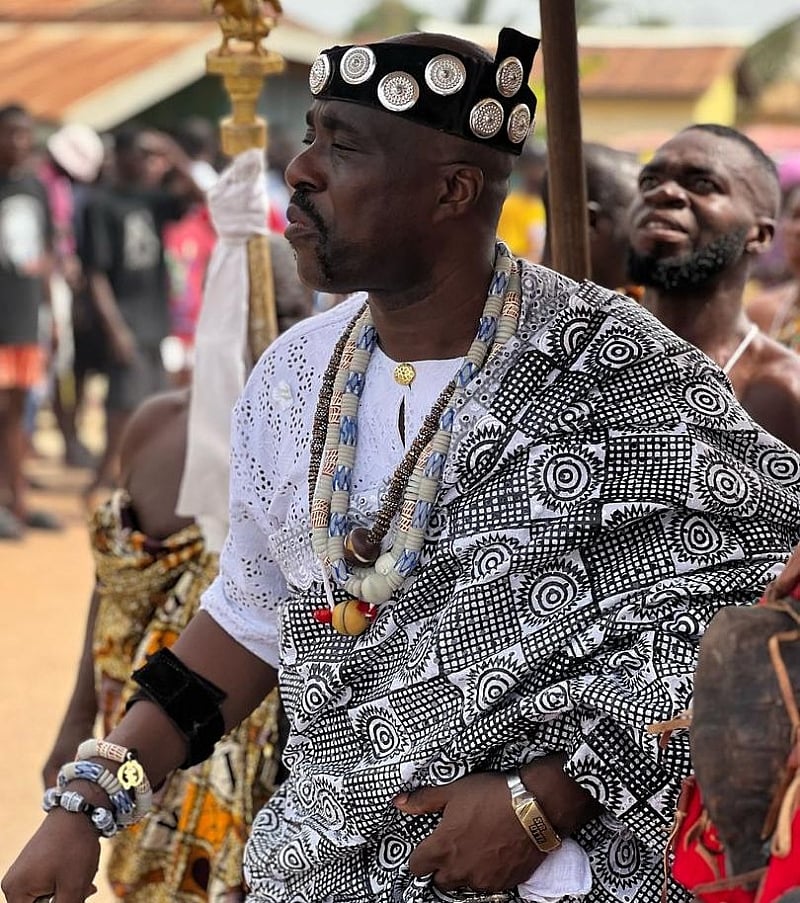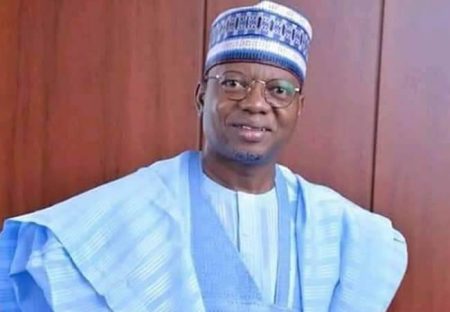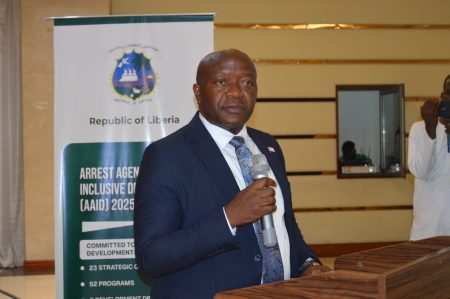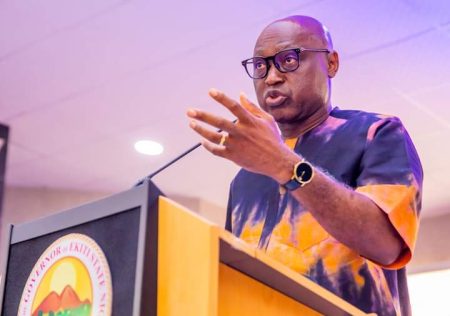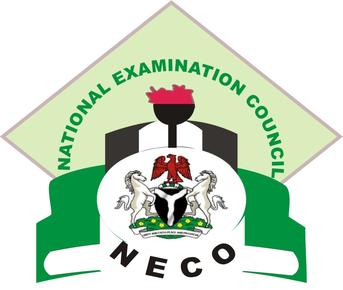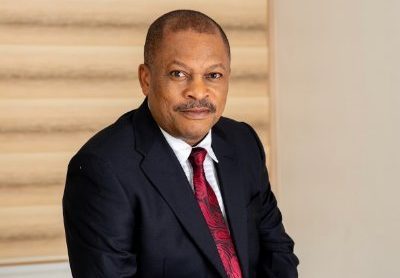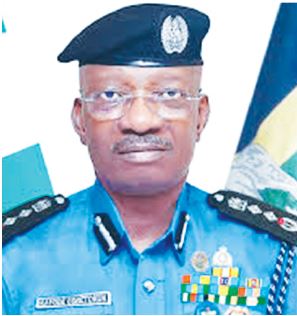The chieftaincy dispute that plagued the Santrokofi Traditional Area for nearly four years finally reached its resolution on Monday, February 10, 2025, with the official swearing-in of Nana Otitiaku IV as the Chief of Santrokofi Bume and the Adontehene of the Santrokofi Traditional Area. The ceremony, overseen by Nana Letsabi II, the Paramount Chief of the Santrokofi Traditional Area, marked a significant turning point for the community, ushering in an era of renewed hope and the promise of collaborative development. The event was steeped in tradition, featuring customary rites, cultural performances, and symbolic acts that underscored the weight and significance of the occasion. The installation of Nana Otitiaku IV heralded not only the end of a protracted period of uncertainty but also the beginning of a new chapter focused on unity, progress, and the collective betterment of the Santrokofi people.
In his inaugural address, Nana Otitiaku IV immediately set the tone for his leadership, emphasizing the critical importance of unity among all Santrokofi citizens. He called upon the community to put aside past differences and work together towards a shared vision of progress and development. Recognizing that unity is the cornerstone of any successful community, the newly installed chief stressed that collective effort and mutual respect would be essential to achieve the ambitious goals he outlined for the future of Santrokofi. His words resonated with a message of hope and reconciliation, urging the community to move forward as a unified force.
Nana Otitiaku IV then unveiled a comprehensive development plan centered on human-centered initiatives designed to uplift the community and improve the lives of its citizens. He proposed the establishment of a Rural Bank, building upon the success of the existing Village Savings and Loans Scheme. This initiative aims to provide a secure and accessible platform for citizens to save their earnings and access credit, fostering both personal financial growth and the expansion of local businesses. He also addressed the issue of food security by proposing the construction of a Post-Harvest Food Storage and Distribution Centre. This facility is intended to minimize post-harvest losses, ensure fairer market prices for agricultural produce, and encourage greater youth participation in the agricultural sector, a vital component of the local economy.
Recognizing the detrimental effects of rural-urban migration, Nana Otitiaku IV proposed the establishment of a vocational training center. This initiative seeks to equip unemployed youth with valuable practical skills, enabling them to secure gainful employment within their own community and contribute directly to its growth and development. Further enhancing community life, he proposed the construction of multipurpose community centers to serve as hubs for social gatherings, cultural events, and civic discussions, fostering a stronger sense of community and shared identity. He also highlighted the need for a well-structured market to boost local trade, attract merchants, create employment opportunities, and stimulate economic activity within Santrokofi.
Reflecting on the challenges faced during the four-year chieftaincy dispute, Nana Otitiaku IV acknowledged the importance of patience and perseverance in leadership. He expressed gratitude for the grace and guidance that enabled him to navigate the complexities of the situation and reaffirmed his unwavering commitment to serving the people of Santrokofi. Addressing the youth directly, he encouraged them to channel their energies into productive ventures like agriculture and trade, cautioning against the pitfalls of social vices such as excessive drinking and drug abuse. He stressed the vital importance of mutual respect and cooperation in achieving the collective goals of the community. His message was one of empowerment, encouraging the youth to become active and responsible contributors to the future of Santrokofi.
The formal installation of Nana Otitiaku IV was marked by traditional rites and ceremonies. Nana Letsabi II, the Paramount Chief and President of the Santrokofi Traditional Council, administered the oath of allegiance and the oath of office, formally recognizing Nana Otitiaku IV as the legitimate Chief of Santrokofi Bume and Adontehene of the Santrokofi Traditional Area. Earlier, a historian had recounted the historical role and responsibilities of the Adontehene, traditionally a position of military leadership and community security, now evolved into a symbol of leadership, stability, and cultural heritage within the traditional council. The ceremony concluded with Nana Otitiaku IV demonstrating his dancing prowess, a traditional display of celebration, followed by the symbolic slaughtering of a ram, signifying the completion of the installation process. The vibrant cultural displays, including drumming and dancing by the Asafo group, reflected the community’s joy and celebration of this historic moment, marking the beginning of a new era for Santrokofi under the leadership of Nana Otitiaku IV.





